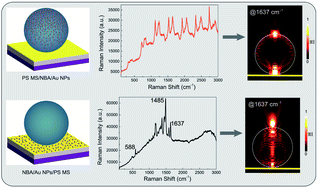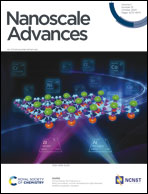Selectively enhanced Raman/fluorescence spectra in photonic–plasmonic hybrid structures†
Abstract
The manipulation of the interaction between molecules and photonic–plasmonic hybrid structures is critical for the application of surface-enhanced spectroscopy (SES). Herein, we report a study on the mode coupling mechanism and SES performance in a typical optoplasmonic system constructed with a polystyrene microsphere (PS MS) resonator and gold nanoparticles (Au NPs). The mode coupling mechanism was found to be closely dependent on the relative positions of PS MS, Au NPs, and molecules in the optoplasmonic system, based on which selectively enhanced Raman and fluorescence signals of molecules can be realized via the collaboration of enhancement and quenching channels of the PS MS and Au NPs. We demonstrate two arrangements of the photonic–plasmonic hybrid structure, which can support fluorescence signals with sharp whispering-gallery modes and apparently enhanced Raman signals with relatively low detection limits and good robustness, respectively.



 Please wait while we load your content...
Please wait while we load your content...